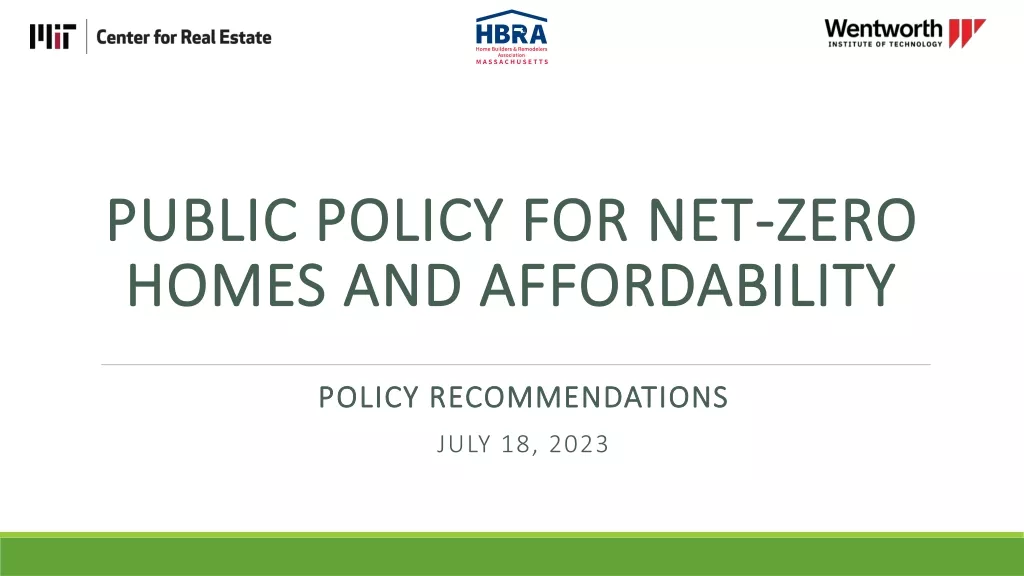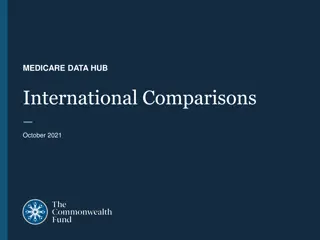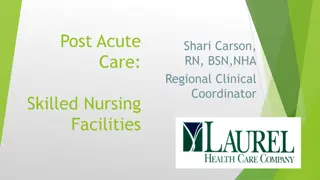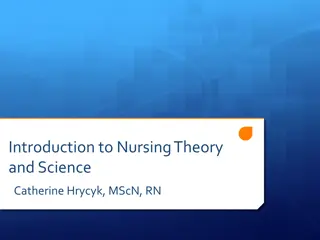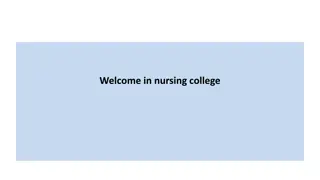Affordability of Nursing in Healthcare: Implications and Challenges
Nursing plays a crucial role in hospital service lines, yet there is a need to advocate for proper staffing and resources. The debate centers around whether the cost of nursing can be justified by the quality of care provided, and how to balance expenses with value. Efforts to control costs by reducing nursing hours or substituting lower skilled staff have implications on patient care and hospital budgets. Deciding affordability involves considering direct costs and potential cost offsets, with the need to redefine the value of nursing services and promote efficiency in healthcare delivery.
Download Presentation

Please find below an Image/Link to download the presentation.
The content on the website is provided AS IS for your information and personal use only. It may not be sold, licensed, or shared on other websites without obtaining consent from the author.If you encounter any issues during the download, it is possible that the publisher has removed the file from their server.
You are allowed to download the files provided on this website for personal or commercial use, subject to the condition that they are used lawfully. All files are the property of their respective owners.
The content on the website is provided AS IS for your information and personal use only. It may not be sold, licensed, or shared on other websites without obtaining consent from the author.
E N D
Presentation Transcript
Can We Afford the Fundamentals of Care? Jack Needleman, PhD FAAN Professor and Chair, Department of Health Policy & Management UCLA Fielding School of Public Health Presented at ILC Conference University of Uppsala June 12, 2017
Outline Nursing matters Nursing is a core service line of hospitals So why does it need to make the case for staffing? What do we mean by can we afford? A reminder of the scope of nurses work When nurses don t have the time or training to do their work, patients and patient care suffer Low hours and low skill mix Is it causal? Missed care How much will staffing cost and what are the cost offsets? Conclusion 2
Nursing matters so why is there a need to make the case for nursing? Searching for value Cost control as ongoing concern in public health systems Quality improvement & process/efficiency improvement linked Agenda of bending the cost curve Agenda of crossing the quality chasm Nursing viewed as cost center, rather than service line Labor largest element of hospital costs, nursing largest element of labor Since late 1980s and 1990s, efforts to try to control costs by reducing nursing hours or substituting lower skilled staff for professional nurses Implications Need for nursing to establish Service line Contribution to value for organization (business case) Need to change policy/payment to value what patients value Nurses work needs to be redesigned to assure quality and efficiency Work of nurses not understood by public, health care execs, other members of health care team Encourages cost cutting, efforts to substitute lower skilled staff for RNs 3
What do we mean by can we afford? Three different answers: Getting more requires spending more Contrast with case where can increase efficiency and get more for same or same for less Not worth the additional cost Would break the budget Even if value, higher value elsewhere that need to preserve Can t shift spending to this area Conflicting interests, so who decides Business case: there s value here but it costs us more than we recover Deciding whether we can afford requires accounting for not only direct costs, but cost offsets (savings from the additional spending) Payment system influences whether hospital or health system retain savings 4
Outline Nursing matters Nursing is a core service line of hospitals So why does it need to make the case for staffing? What do we mean by can we afford? A reminder of the scope of nurses work When nurses don t have the time or training to do their work, patients and patient care suffer Low hours and low skill mix Is it causal? Missed care How much will staffing cost and what are the cost offsets? Conclusion 5
Fundamentals of Care A positive statement of what well-delivered care looks like Source: Kitson, A. L., A. Muntlin Athlin, and T. Conroy. "Anything but Basic: Nursing's Challenge in Meeting Patients' Fundamental Care Needs." J Nurs Scholarsh 46.5 (2014): 331-9. 6
Nurses work is cognitively, intellectually and managerially challenging work Public and too many health care executives understand nursing is physically and emotionally demanding, but too little appreciation that work of front line nurses is cognitively, intellectually and managerially complex My interview with the New York Times Stereotype of nurses: deliver ordered care, administer drugs, take vital signs, help patients eat, go to the bathroom, bath They do and this is part of fundamentals of nursing care, but 7
The cognitive work of nurses Cognitive and intellectual demands of work: Backstop rest of care system: Check for errors in orders, especially drugs If something ordered, not delivered, follow up Responsible for preventing errors of commission and omission Monitor and assess patients For risks of falls, pressure ulcers, delirium and disorientation Progress as expected or problems or developing complications Pain Mental status, especially depression and agitation Initiate appropriate interventions for prevention or treatment to keep patient, staff and others safe Often principal coordinators of interprofessional teams that include physicians, pharmacists, social workers and other providers Targeted education for patients and families to prepare for safe discharge and reduce the risk of readmission Emotional, psychological and existential support for patients and families 8
Nurses work is managerial demanding Providing care for 4-8 patients requires extraordinary ability to manage the stack of constantly changing tasks to meet each patient s needs One nurse, 50 minutes of one shift, 22 position changes Source, Institute for Healthcare Improvement, TCAB How-to Manual on Nurse Time in Direct Patient Care, 2008 9 Yet each patient expects the nurse to be fully present for them.
Economics of nursing: Social vs Business Case Research shows having adequate nurse staffing can reduce lengths of stay, complications and mortality Social value of reduced deaths, adverse events, shorter stays exceed costs of higher nursing hours and skill mix social case is clear But value to hospital depends on whether savings accruing to it exceed its costs Going to focus on business case issues in presentation 10
Review of research on staffing and quality 1996 IOM report Serious paucity of recent research on nurse staffing and quality Call for rigorous research In decade following, substantial research US: Needleman, Buerhaus; Aiken et al.; Mark et al; Kovner; Blegen and others Most research based on comparing high staffed to low staffed hospitals Variety of data sources for staffing Typically, single estimate for year or from single survey Variety of outcomes, with mortality and failure to rescue particularly compelling Research extended to Canada, Europe (RN4Cast), Australia, Asia with similar results 11
Meta-analysis of multiple studies Pooled Odds Ratios of Patient Outcomes Corresponding to an Increase of 1 Registered Nurse Full Time Equivalent per Patient Day Odds Ratio 0.96 0.91 0.84 0.94 0.81 0.72 0.84 0.15 0.64 0.69 Outcome Mortality, hospital, all patients Mortality, intensive care units Mortality, surgical patients Mortality, medical patients Hospital-acquired pneumonia Cardiopulmonary resuscitation Surgical patients failure to rescue Surgical wound infection Nosocomial bloodstream infection (Surgical) Relative change in length of stay (Surgical) All ORs significant at 0.05 level OR below 1.0 positive effect of nursing on outcome OR of 0.9 implies a reduction of risk of approximately 10% Source: Kane, 2007 Studies 5 5 8 6 4 5 5 1 5 3 12
Avoided Days and Adverse Outcomes Associated with Raising Nurse Staffing Levels and Mix to 75th Percentile Estimates from Needleman/Buerhaus, Health Affairs, 2006 Raise RN Proportion 1,507,493 Raise Licensed Hours 2,598,339 Do Both 4,106,315 Avoided Days Avoided Adverse Outcomes Cardiac arrest and shock, pneumonia, upper gastrointestinal bleeding, deep vein thrombosis, urinary tract infection 59,938 10,813 70,416 Avoided Deaths 4,997 1,801 6,754 13
Since Kane, 2007 Replication of results for outcomes observed Addition of other outcomes, notably readmissions Additional international work finding association Aiken, L. H., et al. "Nurse Staffing and Education and Hospital Mortality in Nine European Countries: A Retrospective Observational Study." Lancet 383.9931 (2014): 1824-30. Print. Griffiths, P. "Staffing Levels and Patient Outcomes." Nurs Manag (Harrow) 16.6 (2009): 22-3. Print. Twigg, D. E., et al. "Is There an Economic Case for Investing in Nursing Care--What Does the Literature Tell Us?" J Adv Nurs 71.5 (2015): 975-90. Print. Many Canadian studies Continued work demonstrating importance of skill mix as well as hours Needleman, et al., NEJM 2002 Aiken, Nursing skill mix in European hospitals: cross-sectional study of the association with mortality, patient ratings, and quality of care, BMJQS, 2017 14
The association of staffing and outcomes: Is it causal? Because much research finding association of staffing and outcomes compares high staffed to low staffed hospitals, some skeptics raise question of whether it is staffing or something else about high staffed hospitals that causes these correlations However, three strands of evidence help demonstrate these associations are causal Extensive controls for technology, teaching, location, accreditation, ownership and patient status in the multiple studies of stafifng and outcomes The something else s are controlled for Needleman 2006 NEJM study of shift-to-shift variations in staffing within a single high quality institution controls for other variables except nurse staffing Lower than target staffing associated with higher mortality Increased modeling of pathways by which staffing levels can influence adverse events Especially missed care 15
Modeling pathways of causality: How missed care explains the impact of staffing on outcomes Of the proportion of falls explained by staffing hours per patient day, approximately one-third is associated with missed care 16
Selected studies showing relationship between staffing, missed care and outcomes include: Studies showing relationship between staffing and care Dabney, B. W. and B. J. Kalisch. 2015. Nurse Staffing Levels and Patient-Reported Missed Nursing Care. J Nurs Care Qual. Jha, A. K., E. J. Orav, J. Zheng, and A. M. Epstein. 2008. Patients Perception of Hospital Care in the United States. New England Journal of Medicine 359: 1921-31. Studies showing relationship between care and outcomes Schubert, M., S. P. Clarke, L. H. Aiken, and S. De Geest. 2012. Associations between rationing of nursing care and inpatient mortality in Swiss hospitals. International Journal for Quality in Health Care 24(3): 220-38. Studies showing care and missed care mediates relationship between staffing and outcomes Ball, J. E., T. Murrells, A. M. Rafferty, E. Morrow, and P. Griffiths. 2014. 'Care left undone' during nursing shifts: associations with workload and perceived quality of care. BMJ Qual Saf 23(2): 116-25. Bruyneel, L., B. Li, D. Ausserhofer, E. Lesaffre, I. Dumitrescu, H. L. Smith, D. M. Sloane, L. H. Aiken, and W. Sermeus. 2015. Organization of Hospital Nursing, Provision of Nursing Care, and Patient Experiences With Care in Europe. Med Care Res Rev. Kalisch, B. J., B. Xie, and B. W. Dabney. 2014. Patient-Reported Missed Nursing Care Correlated With Adverse Events. American Journal of Medical Quality 29(5): 415-22. Kalisch, B. J., D. Tschannen, and K. H. Lee. 2012. Missed Nursing Care, Staffing, and Patient Falls. Journal of Nursing Care Quality 27(1): 6-12. 17
What we measure is often the failure to deliver the fundamentals of care 4 instruments of note: US Hospital Consumer Assessment of Healthcare Providers and Surveys Post-hospitalization patient survey of experience of care Kalisch MISSCARE Nurse report of how often elements of care missed on unit Basel Extent of Rationing of Nursing Care (BERNCA) survey Identification of care missed by surveyed nurse Modified version used in RN4CAST European multicountry assessment of nursing care Kalisch MISSCARE Patient Survey Elements of care patients able to report on Patients do notice!! 18
Nurses reporting care left undone, RN4Cast, Sweden RN4Cast % 87 66 52 47 35 33 29 28 28 23 21 20 11 7 Sweden % 75 46 26 34 20 25 31 20 11 25 25 16 6 6 Any care missed Comfort/talk with patients Educating patients and family Develop/update nursing care plans/care pathways Adequate patient surveillance Adequately document nursing care Oral hygiene Frequent changing of patient position Planning care Administer medications on time Skin care Prepare patient and families for discharge Treatments and procedures Pain management Sources: Ball, J. E., T. Murrells, A. M. Rafferty, E. Morrow, and P. Griffiths. 2014. 'Care left undone' during nursing shifts: associations with workload and perceived quality of care. BMJ Qual Saf 23(2): 116-25. 19 Ball, J. E., P. Griffiths, A.M. Rafferty, R. Lindqvist, T. Murrels, C. Tishelman. 2016. "A cross-sectional study of care left undone on nursing shifts in hospitals." Journal of Advanced Nursing 72(9): 2086 2097
And in Sweden, as elsewhere, missed care is associated with more patients/nurse 20
Patients are entitled to nurse staffing that assures safe and reliable care To sum up to this point Nurses work is complex, cognitively and managerially demanding The evidence is substantial that when RN staffing levels or skill mix is low, length of stay and adverse events are higher than they need to be Longer lengths of stay are measures of both quality and efficiency, the ability of nurses to get their care done. This relationship is causal Policy and management should reflect this Patients are entitled to staffing that assures safe and reliable care Competition and public reporting (Consumer Reports model) not sufficient Patients don t always have choice of hospital Nursing is core service of hospital Patients should be able to expect the hospital can deliver care safely and reliably (Underwriters Laboratory model) 21
But is fundamental nursing care affordable? Does it save more than it costs? If not, how much more? When assessing costs of improved nurse staffing, need to consider not only the cost of higher staffing but cost offsets: Shorter stays, reduced adverse events, reduced readmissions and better work environment that reduces turnover Four studies that address these questions find: Higher RN mix of RN and LPNs cost saving Higher nursing hours add less than 1.5% to hospital costs and may add no costs: Microsimulation studies show small net cost Needleman 2006, Dall 2009, Shamliyan Kane 2009 Direct regression of per admission cost on staffing levels finds no statistically significant increase in cost/admission in hospitals with higher staffing per patient Rand study (Martsolf 2014 Medical Care) Looking only at the increased cost of nursing, ignoring the offsetting cost savings provides a misleading picture of the net cost of safe staffing levels Given the offsetting cost savings, safe staffing levels can be achieved with little or no net cost to the hospital 22
Needleman, Buerhaus, Business Case for Nursing Needleman, Buerhaus, NEJM, 2002 examined two dimensions of staffing Hours/patient day RN/LPN mix Wide variation across hospitals Robust association of staffing variables and outcomes for: Medical patients: length of stay, urinary tract infection, pneumonia, upper GI bleeding Surgical patients: failure to rescue Incorporated results into business case analysis in Health Affairs, 2006 by estimating impact of moving lower staffed hospitals up Updated in Needleman, PPNP, 2008, Is What's Good For The Patient Good For The Hospital? Aligning Incentives And The Business Case For Nursing 23
Avoided Days and Adverse Outcomes Associated with Raising Nurse Staffing Levels and Mix to 75th Percentile Estimates from Needleman/Buerhaus, Health Affairs, 2006 Raise RN Proportion 1,507,493 Raise Licensed Hours 2,598,339 Do Both 4,106,315 Avoided Days Avoided Adverse Outcomes Cardiac arrest and shock, pneumonia, upper gastrointestinal bleeding, deep vein thrombosis, urinary tract infection 59,938 10,813 70,416 Avoided Deaths 4,997 1,801 6,754 24
What are the costs and cost offsets of increased nurse staffing Estimates from Needleman/Buerhaus, Health Affairs, 2006 Raise Licensed Hours Raise RN Proportion Both $ 811 Million $ 2.6 Billion $ 7.5 Billion $ 4.3 Billion $ 8.5 Billion $ 6.9 Billion Cost of higher nursing Avoided costs (full cost) ($ 1.8 Billion) $ 3.2 Billion $ 1.6 Billion Long term cost increase As % of hospital costs -0.5% 0.8% 0.4% Short term cost increase (save 40% of average) As % of hospital costs ($ 2.4 Billion) $ 5.8 Billion $ 5.7 Billion -0.1% 1.5% 1.4% 25
Conclusions Principal source of avoided costs is avoided days LOS reduction across all patients, but complications rare LOS change approximately day of a 5 day admission Some due to reduced complications, both measured and unmeasured Also likely associated with improved ability of nurses to deliver care efficiently Complete admission/discharge process & reduce delays Given relative magnitude of savings, it is unlikely that increasing complications included in analysis would substantially add to cost savings Dall, et al., Medical Care adds more adverse events, alternative modeling, similar conclusion Given current nursing models: Increasing RN share of licensed pays for itself Increasing hours do not appear to pay for themselves However 26
Recent study found increased staffing did pay for itself Martsolf et al., Examining the value of inpatient nurse staffing: an assessment of quality and patient care costs, Medical Care, 2014 Increases in nurse staffing levels were associated with reductions in nursing-sensitive adverse events and length of stay but did not lead to increases in patient care costs. Changing skill mix by increasing the number of registered nurses, as a proportion of licensed nursing staff, led to reductions in costs. What s different in this study from prior business case: Different methods Analyzes costs in same data base as adverse events and LOS Does not try to isolate the associated costs of higher nursing levels If confirmed in additional research, important support to argument that higher staffing that increases safe and reliable care is affordable. 27
Regression-based estimates of changes in cost/admission of higher staffing Change in cost/admission 95% Confidence interval Staffing Measure Estimate Low High % Licensed that are RN RN+LPN hours per 1000 inpatient days $ (87) $ 167 $ (154) $ (35) $ (20) $ 368 Source: Martsolf, 2014 28
Table from Martsolf 2014 showing regression estimates of changes in cost/admission of higher staffing 29
A business case consideration: Who retains the gains from better nursing care Under per admission payment, like DRGs, or overall budget The hospital Under charge based, fee-for-service or per diem payment The payer (passed on to the patient in lower premiums?) Should payer compensate hospital for better outcomes and savings? Under value based payment incentives ACOs, etc. Shared savings 30
Conclusions Strong case for nursing as core service line of hospitals, with adequate levels and skill mix of nursing associated with shorter lengths of stay, fewer hospital-acquired complications, and fewer readmissions Not appreciated because full scope of nurses work not understood Including by nurses and nursing students Nurses need to tell their story better Economic costs of adequate staffing modest to zero when cost offsets taken into account Deskilling is a bad idea, likely to increase costs Improving hours improves outcomes at modest cost More for more Key gain is shorter length of stay, improved throughput Nurses need to embrace role of improving quality, patient experience and efficiency of care in hospitals and other settings This is part of FoC Nurses should be advocates for more bundled care so hospitals retain gains from reduced length of stay and hospital-acquired complications Education needs to prepare nurses to play this role 31



